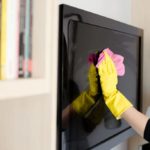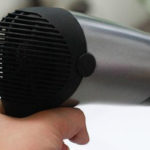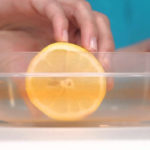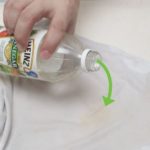Kitchen is one of the most bacteria-infested areas in your house. And the item that harbors the most bacteria in the kitchen is the cutting board. Many housewives use the same cutting board year after year without knowing that its lifespan is actually quite short.
Common mistakes when using cutting boards
Below are some common mistakes when using cutting boards that make them prone to bacterial growth.
Using only one cutting board: If you use one cutting board for both raw meat and vegetables or cooked food, it will definitely cause your family to be contaminated with the bacteria. If the amount of bacteria is large enough, it can lead to disasters. Therefore, the first principle of using cutting boards is to have 2 separate ones for raw and cooked food, with different appearances for easy distinguishing.
Using dishwashing liquid to clean the cutting board: If you only use regular dishwashing liquid, you may only clean the bacteria on the surface of the cutting board without removing the hidden bacteria deep inside the board, even when you use warm water. Not to mention, the remaining chemicals will affect the health of people in the house.
Not washing the cutting board properly: Many people have the habit of using steel or metal scouring pad to scrub the cutting board regularly, which scratches the board and creates a hiding place for many types of bacteria.

After a period of use, the wooden cutting board becomes a nest of bacteria.
Keeping the board wet: A wet surface is a good environment for bacteria to grow. Instead of immediately placing the board on the rack after washing, let it dry completely first. This will significantly reduce the chance of bacteria growth.
Using both sides of the board: Many people often use both sides of the cutting board, one side for cutting meat, the other side for cutting fish, or one side for cooked food and the other side for raw food. Most flat surfaces used to place the board when cooking like the kitchen counter, kitchen shelves… are sources of pollution, very dirty. When you put the board down, bacteria and germs have already attached to it. Therefore, you should only use one side of the board.
Using the same board for too long: After a period of use, the wooden and plastic cutting boards become nests of bacteria. Once your board starts to crack or has grooves, it will be very difficult to clean, and bacteria will thrive in it. Therefore, you should replace the board every year.
How to clean wooden cutting boards to ensure hygiene
Wash with hot water and soap
Many families often use the same cutting board for both raw and cooked meat, so make sure to thoroughly clean and sterilize the board after each use. First, clean the surface of the board with hot water and soap to remove food residues and bacteria, then rinse it with water to remove soap residue.
Air dry completely
After washing, use a clean cloth to dry the surface of the cutting board and then stand or hang it in the air to dry naturally. Note that using kitchen towels can potentially contaminate the board’s surface with bacteria. Make sure to regularly clean these towels. Try to let the board dry completely before moving on to the next sterilizing step.
Sterilize
Research also suggests that depending on the type of wood used for the cutting board, its structure as well as the porosity and water absorbency of the wood, each type will contain certain types of characteristic bacteria.
Sterilizing the board to reduce the amount of bacteria on its surface as well as reduce odor is extremely important. Washing the board with regular dishwashing liquid may not be effective. Instead, use natural and safe disinfectants such as vinegar, lemon, salt to rub on the surface of the board. Water containing lactic acid (such as lemon or apple cider vinegar) and 4th grade ammonia solution can help reduce bacterial contamination on the board surface.
Here’s how to sterilize a wooden cutting board:
Rub the wooden surface of the board with a piece of lemon or spray the prepared disinfectant solution onto the surface of the board.
Let it soak for about 1-5 minutes.
Rinse with water and let it dry naturally in the air.
Try to sterilize the board at least once a week.
Maintain the board with oil
Dry wooden boards are prone to cracking, breaking, or splitting. You should try to maintain the board regularly as the best way to preserve moisture and extend the board’s lifespan. You can use mineral oils like liquid paraffin or linseed oil.
Apply a layer of mineral oil to the surface of the clean and dry board. Then, use a small paintbrush or cloth to apply oil until the board is moist. Soak the board overnight or for a few hours before using. To achieve the best results, you should maintain the wooden board once a month.
Things to avoid when using wooden cutting boards
Do not soak the board in water. Wooden boards are very porous and can absorb water when soaked in it, leading to cracking and reducing the board’s lifespan.
Do not put the board in the dishwasher unless it is labeled dishwasher safe. Many studies have shown that dishwashers can cross-contaminate bacteria from the board to the dishes and utensils.
Do not use regular cooking oil to maintain the board as it can cause rancidity and produce an unpleasant odor.
Do not use a cracked or broken wooden cutting board because the cracks and crevices are difficult to clean. The cracks will be a hiding place for bacteria and can contribute to food poisoning. It is best to replace the board immediately.
According to VTC News



































